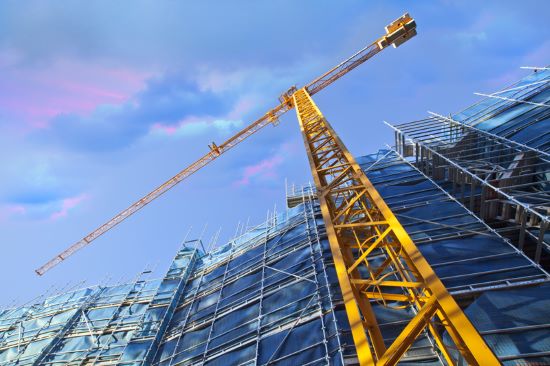Please welcome back Katie Brenneman, a regular 21st Century Tech Blog contributor. This is her 20th offering here. Katie writes about a wide range of subjects which makes her well-suited to providing articles for you to read. In the past, she has noted that when not writing, you’ll find her with her nose buried in a book, at her local coffee shop, or hiking with her dog. To learn more about Katie, follow her on X.
Today she is writing about the construction industry’s embracing of the Internet of Things (IoT) to help achieve sustainability and transition to lower carbon practices. Please read on and feel free to comment.
The construction industry is embracing IoT like never before in its drive to create efficiencies and achieve greater sustainability. This IoT network of interconnected devices is transforming construction sites into cutting-edge environments that optimize efficiency, safety, and productivity using the data produced to make daily decisions.
IoT has significant and versatile potential to revolutionize construction. Smart sensors play a crucial role in optimizing resource use, while safety automation slashes accident risks.
Smart Sensors for Resource Optimization
State-of-the-art IoT technology allows developers to create smarter construction sites, enabling precise control of energy, materials, and waste. IoT sensors provide detailed consumption data that is analyzed to enhance project planning, cut costs, and create more sustainable footing for the business. How do they do this?
- Real-time energy monitoring: Sensors track power usage across construction sites, identifying energy-intensive processes, idle equipment, and materials inefficiencies;
- Waste reduction: RFID tags and weight sensors monitor material stockpiles, preventing overstock and reducing waste – especially crucial when 40% of emissions today come from buildings;
- Water management: Smart meters and flow sensors detect leaks quickly, measure consumption by activity, and optimize water use in processes like concrete mixing and dust suppression. Some systems automatically adjust water flow based on weather conditions or task requirements.
By focusing on the way resources are being used in key areas like energy and water, developers get a better sense of how to best use whatever is available.
Safety and Efficiency Automation
IoT-driven automation is transforming construction operations, enhancing both safety and efficiency. By integrating smart systems, sites become more responsive and secure work environments. Streamlined communication and predictive maintenance alone are game-changers, and they’re not alone. Automation makes a building site safer and more efficient by offering extraordinary additions to construction workflows:
- Streamlined communication: IoT devices and interfaces connect workers and equipment in real-time, reducing delays and enabling swift responses to potential hazards;
- Predictive maintenance: AI-powered sensors forecast equipment failures, allowing for proactive maintenance, prolonging equipment lifespan, and reducing safety risks from unexpected breakdowns;
- Robotics: Drones conduct aerial inspections, and autonomous vehicles can handle material transport, drastically cutting risks to workers in hazardous terrain;
- Safety: IoT sensors on sites and wearable devices can detect hazards like toxic gases, unstable structures, vital signs, and locations. These safety innovations empower more proactive safety measures and responses;
- Automated material selection: Automation can determine the most energy-efficient materials and optimal placement, helping you tackle carbon emissions and minimize your overall carbon footprint.
IoT Infrastructure and Data Management
IoT needs a robust network infrastructure and competent data management to ensure seamless operation of smart devices and meaningful use of collected data. This complex, necessary infrastructure includes:
- Network requirements: High-bandwidth, low-latency connections to support numerous devices and real-time data transmission while leaving room to scale the system in the future;
- Dark fibre deployment: Use of dark fibre optic lines to provide high-speed data transfer for data-intensive IoT systems, boosting both network security and reliability, essential for futureproofing;
- Data analysis: Robust big data analytics with AI algorithms to process and analyze vast quantities of data from the IoT network, measuring key performance indicators (KPIs) and accurately predicting project outcomes for future reference.
What’s In the Future?
While the benefits are significant, the industry has been slow to adopt IoT. Today, in surveys, 95% of construction companies see IoT as an emerging technology with 72% indicating its adoption as part of their strategic plan or vision.
So where will the industry go with IoT in the next decade and beyond?
- Adoption of IoT to feed digital twin technology: Construction companies are integrating digital twins into their core business operations with IoT monitoring providing feedback on all aspects of project performance from material usage to scheduling and maintenance.
- Integration with Smart City Infrastructure: Cities are embracing connectivity for a wide range of systems and services. Project developers will need to interface seamlessly with these smart city networks or else be shut out of future construction opportunities;
- Synergies with Artificial Intelligence (AI): Combining AI, machine learning algorithms and IoT data collection will produce analytics and predictive capabilities leading to real-time optimization of projects, automated decision-making for resource allocation and scheduling, and predictive infrastructure maintenance;
- Sustainability and Environmental Impact Improvements: Project developers will have real-time data to help them monitor energy consumption, material tracking and waste management, and ongoing environmental impacts.
The promise of smart sensors is still at the early stage of its evolution. Construction companies need to act now to secure their future allowing them to fully embrace the green revolution.









